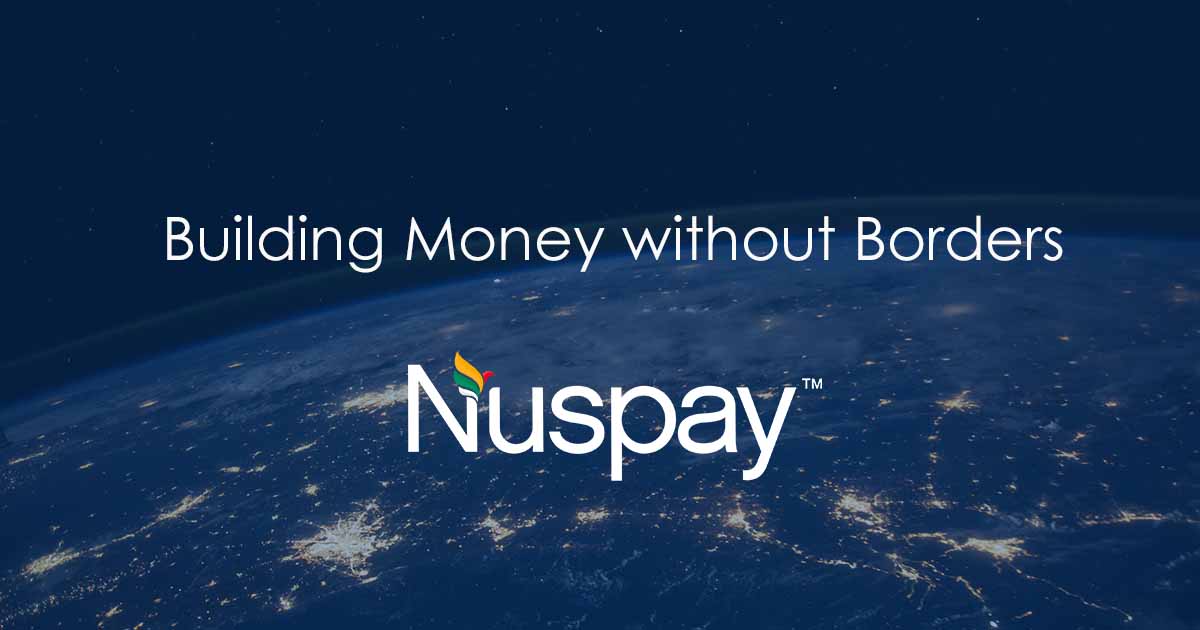Top of the Line Cross border Payment Solution on Blockchain Network

As the world’s first virtual account payment platform, Nuspay X-Border payment solution with blockchain technology has drawn the interest of many financial institutions and banks. Nuspay’s Blockchain is a standardized database on a decentralized system that is open to anyone on the platform. This will mean that there would be direct deposits, including the cross-border payments solution without risk of manipulation, since no banks, intermediaries or correspondents are involved. The idea underlying transmitting the cross-border remittance through Nuspay™ enables banks to get the settlement agent granting a bilateral, visible and immutable fund transfer.
Nuspay’s Blockchain technology will help accelerate the cross-border payment application and the benefits of it relative to conventional procedures are immense. Cross-border transfers are transactions in which both the payee and the beneficiary of the contract are located in individual countries. Transactions may take place between parties, businesses or banks that aim to move funds through territories. For internationally operating merchants, it is necessary for them to be in a position to receive transactions across most regions. In terms of two divisions, retail and wholesale, the cross-border payment industry is sometimes regarded with substantially varying features. The portions of the payment are end-users (i.e. individuals, companies or public institutions) in the transboundary sector payment category, and the payment value is typically lower. Although a number of characteristics can be defined in the word "wholesale," the parties are financial institutions in cross-border wholesale payments (usually banks). Cross-border bulk payments are usually generated through large-value transactions between financial institutions, through committed bilateral interbank agreements or multilateral payment schemes for own accounts or on behalf of clients, like retail payments.
Distinct Global Money Transfer Solution (Cross Border Payment Solution)
The conventional system cross-border payment that we have now faces a lot of problems. Internationally receiving the currency is a dynamic mechanism and there is no ubiquitous method to route money across borders. Instead, banks are interconnected by a very dated scheme, which typically shows to be sluggish and unreliable financially. This all introduces a further degree of dynamic operating problems for our banks, but this is not the greatest concern yet. What is particularly frightening for these banks seems to be that the unpolarized cross-border payment system would certainly lead to disgruntled clients that actually leave to carry on business elsewhere. But no bank which is not looking to go out of business can afford to lose clients and funds (not to mention their reputation). Which is why it is of top importance for banks to boost their cross-border transactions situation today by using modern efficient sharing approaches and introducing the most up-to-date banking processing solutions. Among all the problems, the outdated operational system is one of the biggest one. Currently all cross-border payments are conducted inSWIFT MT103 messaging format which is very low in capacity to handle information although reliable. So, this slow manual communication makes the current platform very inefficient. Then there is also slow processing during payment. Payment can also be halted for a few hours where there is a problem even when it is straightforward, but the transaction can remain on the platform for weeks when the case is extreme. Moreover, Various rules on what details should or cannot be separated without mentioning the readings of the provisions make an otherwise confusing cross-border operation more difficult. Banks must obey these rules carefully and spend a considerable amount of time in organizing what information should be transferred through multiple jurisdictions.
Remittance is a financial transfer to another country's friend or family member. Millions of people around the world are relying on the money mostly used for household commodities, food and shelter, education and healthcare. But typical transactions mean waiting for several hours to have money wired for bills, which almost often come with high costs. But if Nuspay’s X-Border technology is used for cross-border payments then these barriers can be broken. We are now in a time of dramatic change: how people buy, how business people trade and how financial institutions connect. Money itself transforms its own essence. Digital remittance will enable people all over their life to make their finances more stable, effective and inexpensive by empowering them to do what they want with their money. BASIC peer to peer payments are really just the start, and some firms are redefining the models, with cross-border bill payment and smartphone recharge in their new territories.
The Future of X Border payment Solution
X-Border payment solution has the ability to improve cross border payment . It can bring many benefits in this platform. It refers to the removal from payment collection by all intermediaries, central authorities or correspondents. In the center of the parties that negotiated a bilateral arrangement, the transaction guarantees confidence. Minimum costs are lowered in the payment chain. Moreover, reduces settling time as main agencies and communications gestures are not required. It combines the messages needed for sending transfers between the shipping firm and the beneficiary bank in order to settle the monetary funds among them. By allowing the banks to transfer and settle money immediately, the Ripple approach reduces overall transaction costs and produces new sales possibilities by entry to new customers and new goods like micropayments.
Instant transfers are made using Ripple's distributed open-source payment method with minimum fees. Path-finding algorithm is used by Nuspay™ to achieve a variety of cash transactions that guarantee the absolute lowest transaction costs for cross-border payment. The gaps have to be fulfilled, in order to satisfy the needs of both the new economy and foreign commerce, to balance the capability of domestic payments. Banks are now updating their own IT and business processes on domestic payments in real time which can also be used for cross-border trades in real-time with the help of Nuspay™. The company solution from Nuspay™ is sufficiently advanced to introduce and develop a transboundary payment network and a coalition of banks has been developed with this Nuspay™ platform in mind.

